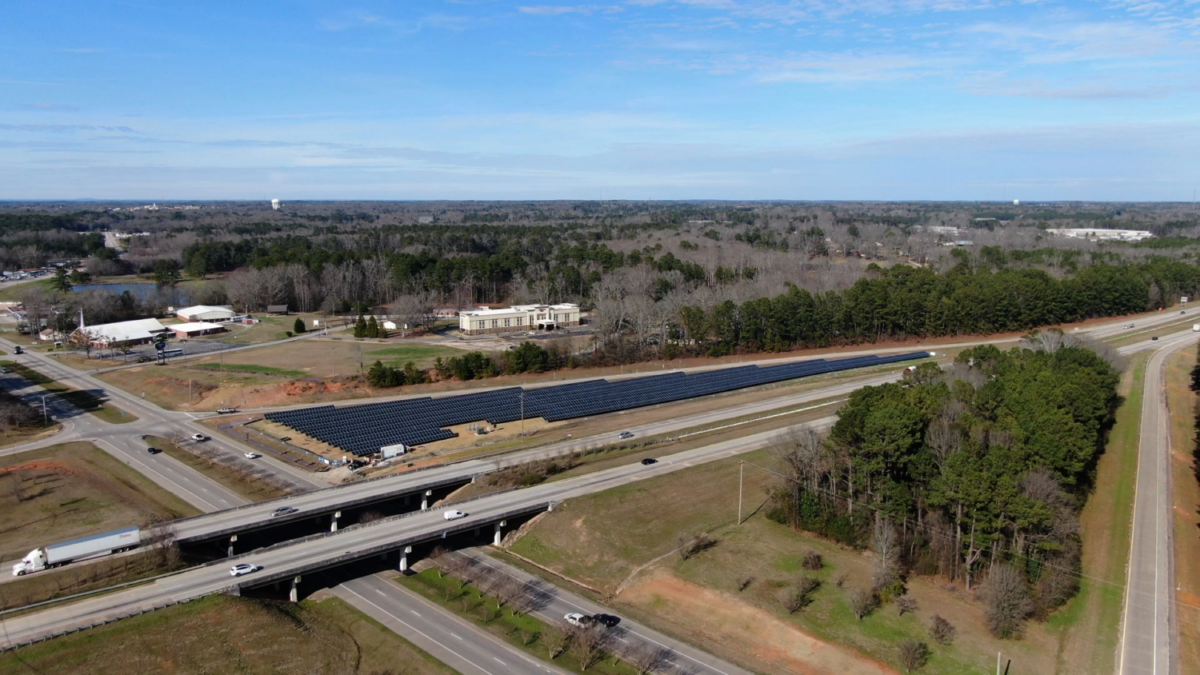From pv magazine USA
Thoughtful planning of solar project siting can save useful land, protecting farmlands, habitats, and other land uses. A report from Environment America based on analysis from Georgia-based nonprofit The Ray shows that the counties of Los Angeles, Ventura, and San Diego in California have 4,800 acres of suitable solar project space alongside its highways and rights-of-way.
These spaces are advantageously located alongside infrastructure and are otherwise unused. The sites could host over 960 MW of solar capacity, generating 1,960 GWh per year. This is roughly equivalent to the electricity demand of 270,000 California homes.
“California can utilize the results of our solar analysis tool to prioritize the most promising spaces for solar panels in the state’s vast rights-of-way, and generate a wealth of clean electricity in the process,” said David Peters, western regional manager for The Ray.


California needs to triple its solar power capacity to meet its 100% clean energy requirement, according to the California Energy Commission. Putting solar panels alongside already-developed highways reduces the need for large utility-scale projects that can harm environmentally sensitive areas such as California’s deserts, said Environment California.
Environmentally sensitive or protected lands, areas within roadway clear zones, and areas in close proximity to pipelines, transmission lines, and other infrastructure were omitted from the report as “suitable” locations alongside highways.
Popular content
Past solar highway projects have shown promise across the country, even in northern or rainy climates. The nation’s first right-of-way solar project was installed in 2008 just outside of Portland, Oregon. In 2012, a second project was added, adding 1.75 MW of solar capacity.
In Georgia, a segment of highway near LaGrange, Georgia known as The Ray Highway, is home to a 5-acre 1 MW solar array commercialized in February 2022 on otherwise underutilized state-owned land.
And in Maine, the state’s Department of Transportation (DOT) completed three projects in June 2023, adding 8.5 MW of capacity. The projects power the state’s Capitol building complex and additional facilities. The projects are expected to save the state $7.2 million over the next 20 years on electricity costs. In addition to the solar deployment, Maine DOT planted pollinator-friendly plants in the ground surrounding the panels.
California targets 100% emissions free electricity by 2045. The three counties in the report, along with California’s 55 other counties have an opportunity to move towards this goal while preserving land.
“This new analysis makes a strong case for utilizing land along California’s highways to generate clean energy,” said state Sen. Josh Becker. “If just three counties have this much solar potential alongside their highways, imagine our entire state’s potential. Let’s make better use of the available roadside land at our disposal.”
This content is protected by copyright and may not be reused. If you want to cooperate with us and would like to reuse some of our content, please contact: editors@pv-magazine.com.



9 comments
By submitting this form you agree to pv magazine using your data for the purposes of publishing your comment.
Your personal data will only be disclosed or otherwise transmitted to third parties for the purposes of spam filtering or if this is necessary for technical maintenance of the website. Any other transfer to third parties will not take place unless this is justified on the basis of applicable data protection regulations or if pv magazine is legally obliged to do so.
You may revoke this consent at any time with effect for the future, in which case your personal data will be deleted immediately. Otherwise, your data will be deleted if pv magazine has processed your request or the purpose of data storage is fulfilled.
Further information on data privacy can be found in our Data Protection Policy.